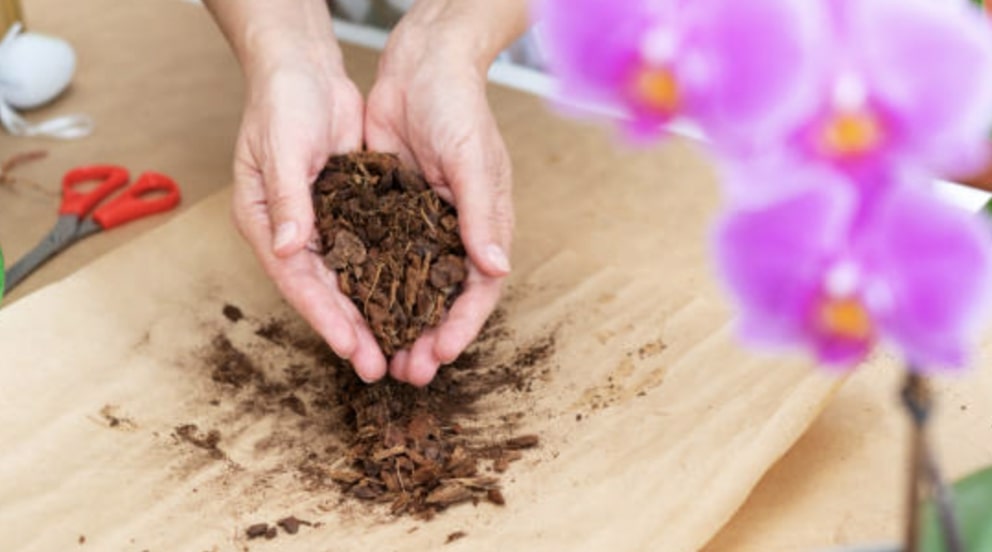No one can deny the attractive, graceful, and timeless beauty of orchids. But in order for them to be like that, you have to plant and care for them properly.
One of the things we get asked a lot is what soil should be used for their specific orchid variety. This is what our easy guide today is all about, so read on to find out!
About Orchids


Orchid flowers belong to a large family called Orchidaceae. It’s composed of 700 genera and over 28,000 species.
There are also three kinds of orchids, namely epiphytic, lithophyte, and terrestrial orchids. Each of them grows in different habitats and prefers a certain soil.
Planting Materials I Can Use for the Soil


A potting mix is made up of organic and inorganic planting materials. Here is a list of them:
Organic materials
- Shredded wood bark
- Wine cork
- Charcoal
- Sphagnum peat moss
- Coconut husk chips
Inorganic materials
- Clay aggregate
- Perlite
- Lava rock
- Pumice
- Vermiculite
- Rock wool
Keep in mind that you can use one or combine two or more of these materials in order to make the ideal potting mix.
There’s not one tried and true exact formula for your specific orchid plant. After all, these plants are very diverse. Though, there is a general right kind of soil you can use for them.
The Right Soil for Epiphytic Orchids
The most common orchids are epiphytic orchids. Epiphytic orchids are those that have a distinct stem that absorbs moisture from the air, enabling them to withstand periods of dry spells.
They naturally grow on other plants, rocks, and even trees by clinging to plants’ and trees’ branches with their strong roots. They’re sometimes referred to as air plants because they may hang from which they cling.
You may be familiar with Phalaenopsis, Cattleya, Catasetum, Encyclia, and Cycnoches. All of them are epiphytic orchids.
Epiphytic orchids prefer highly acidic soil with a pH scale of 5.5 to 6.5. They want a potting mix with great aeration and drainage.
You can create a potting mix for these flowers by mixing one part perlite, one part sphagnum peat moss, and one part bark fines (smaller pieces of bark mulches).
The Right Soil for Lithophyte Orchids
There is another orchid grouping called lithophytes. Lithophytes are simply orchids that grow on rocks.
One example of this is the lovely, iris-like, and large-petaled Phragmipedium. Another is the Paphiopedilums or slipper orchids—named so because their baggy lip or labellum resembles a woman’s slippers.
Due to their native rocky growing environment, they thrive in rocky soil or potting mix. Lava rocks can be a great lithophyte medium if you live in a very cold region because they retain heat excellently and don’t rot or decompose.
The Right Soil for Terrestrial Orchids
As the name suggests, terrestrial orchids are orchids that grow on the ground. They can spread roots in the soil or germinate from pseudobulbs (an enlarged bulbous stem).
Among the popular terrestrial orchid flowers are Macodes, Zeuxine, Hetaeria, Erythodes, Phaius, and Liparis.
Terrestrial orchids grow best in a regular potting mix like the one you use for your ordinary house plants.



